new posts in all blogs
Viewing: Blog Posts Tagged with: Top Shelf, Most Recent at Top [Help]
Results 26 - 50 of 80
How to use this Page
You are viewing the most recent posts tagged with the words: Top Shelf in the JacketFlap blog reader. What is a tag? Think of a tag as a keyword or category label. Tags can both help you find posts on JacketFlap.com as well as provide an easy way for you to "remember" and classify posts for later recall. Try adding a tag yourself by clicking "Add a tag" below a post's header. Scroll down through the list of Recent Posts in the left column and click on a post title that sounds interesting. You can view all posts from a specific blog by clicking the Blog name in the right column, or you can click a 'More Posts from this Blog' link in any individual post.

MARCH Book One, the comics version of the life story of Civil rights pioneer Rep. John Lewis. has been breaking boundaries since it was published last year and it just smashed another one; it’s the first ever graphic novel to win a Robert F. Kennedy Book Award.
The awards recognize books which reflect Kennedy’s ideals of justice, human rights, and equality of opportunity, and was a champion of civil rights prior to his assassination in 1968. March will received a “Special Recognition” award at the ceremony tomorrow in Washington, D.C.
Lewis previously won a RFK Award in 1999 for his prose autobiography Walking with the Wind in 1999. And The only other time a Special Recognition Award was given was to cartoonist Herblock in 1994.
March, written by Lewis and Andrew Aydin and drawn by Nate Powell, has been getting massive exposure unprecedented for a graphic novel since it was published last year, including appearances on Rachel Maddow and Stephen Colbert.

I thought this announcement of global comic book love was worth it’s very own post. This is the second time this event has been held, sponsored by the Comic Con India. And instead of going to stores, you download free comics from various Indian publishers. Sounds like a great way to experience some new stuff from publishers Amar Chitra Katha, Campfire Graphic Novels, Pop Culture Publishing, Vimanika Comics, Diamond Comics, Chariot Comics, Orange Radius and Astute Media Vision. Last year, 15,000 free comics were downloaded. Organizers expect more this year.
The comics are available from Readwhere.com or via the Readwhere App. Comics will be available from Saturday 3rd May at 12AM and End on 4th May at 11:59PM. I hope it’s worldwide, because I want to read some Indian comics!
Last year, with an aim to expand the scope and access of comics across India, Online digital content marketplace Readwhere.com partnered with Comic Con India to launch a new initiative called Free Comic Book Weekend, to allow comics enthusiasts download Indian comics for free. This year also, Readwhere.com will be providing the platform to serve free digital comics to fans across India.
Jatin Varma, Founder, Comic Con India shared, “FCBW was started last year with the simple aim of generating interest in Indian comics beyond our conventions. We are taking steps ahead and making Indian comics available for fans right at their fingertips via digital editions powered by Readwhere. We had a great response last year, there were over 15,000 unique fans who claimed free comics during the 1st Free Comic Book Weekend in 2013. We expect to take that further and keep building upon this concept in the coming years.”
Manish Dhingra, Director & Co-Founder, Readwhere.com shared, “It’s the second year of the Free Comic Book Weekend in India. The debut year was very successful where we delivered copies of comics digitally to more than 15000 comic book aficionados, all over a weekend. In the second year a lot of focus will be on to get comic book lovers to read more, especially on their mobile and tablet devices. So the center focus this year is Mobile and tablet comic reading.”
Manish further added, “Just like in the US we will be offering a set of titles for free and a larger set at a special weekend discount.”
Readwhere.com will be offering a total of (approx) 15 titles from various publishers. Users will have the option of choosing any 5 for free. The rest will be available at a very nominal price as a bundle.
Manas Mohan, COO, ACK Media said, “ACK is very excited to be a part of the World Free Comic day, and are glad that Comic Con India is bringing such fun events to the forefront in India.”
The leading publisher, Campfire is entering the digital field in a big way with its own app. So fans can Download the Campfire App for their titles. “The FREE Comic Book Weekend gives all fans of the medium the perfect chance to read and enjoy one of Campfire’s best loved and most enduring graphic novels. It is the perfect introduction to Campfire’s library of great books, including World War One: 1914-1918, and many more” shared Girija Jhunjhunwala, Director, Campfire Graphic Novels.
The titles featured this year will be a mix of iconic and latest. Some of the most interesting titles that will be available to fans for free includes Draupadi: The Fire-Born Princess by Campfire, Satya Police by Pop Culture Publishing, Tinkle by ACK, Godslayer by Chariot Comics, Some of the favourite titles by Diamond Comics and more.

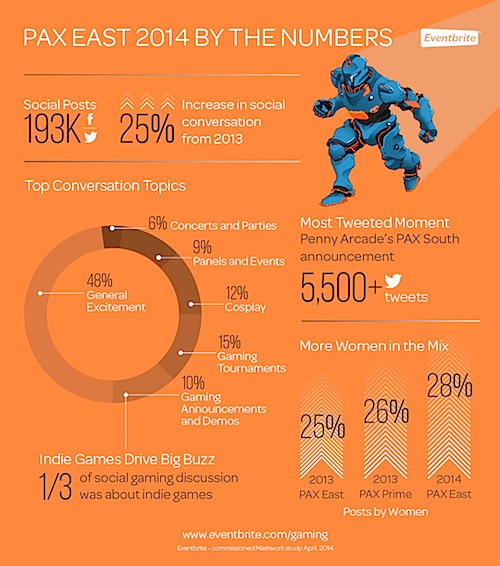
PAX East, the hugely successful Boston version of the gaming show created by Penny Arcade, wrapped up last weekend. PAX Prime is held in Seattle, and they just announced PAX South, to be held Jan. 23-25 in San Antonio, Texas. There’s also a PAX Australia—all the shows are run by ReedPOP, which also throws a bunch of comic-cons worldwide, as you may be aware.
Eventbrite is a ticketing agency that helps sell tickets for gaming events and they teamed with social media analysts Mashworks to analyze all posts from Twitter, Facebook, forums, and blogs about PAX East during the three-day convention. Eventbrite sent us the above infographic after using social media analysis to see what people were socialing about the show. Eventbrite provided the following bullet points:
• PAX East created a bit of a social media frenzy: the event drove a whopping 193,000+ social media posts, driving 500+ more posts than PAX Prime 2013 and 25% more social volume than PAX East 2013!
• There were more women in the mix than ever: 28% of people talking about PAX East were women, up from 25% at PAX East 2013 and 26% at PAX Prime 2013, indicating that female attendance and social sharing at gaming events is steadily growing.
• Move over, Nintendo! Indie games drove big buzz: Over a third of all discussion around game announcements and demos centered on indie games — great to see new names breaking through. Conversations studied ran the gamut, and general excitement about PAX East dominated social discussion (48%), followed by chatter about gaming tournaments, like the Towerfall tournament and the 25K Infinite Crisis Event (15%). Other discussion topics included cosplay (12%), game announcements and demos (10%), Panels (9%), and parties and concerts (6%). The biggest social spike of the convention was the announcement of PAX South, driving over 5,500 posts from excited gamers.
Now why are we highlighting this press release? It seemed to have several interesting aspects, not least of which the integration of more women into the PAX culture. In the past, there were some ugly incidents, but hopefully more mixed participation will help change that.
It also seems that Eventbrite is getting more involved in the pop culture event arena — well, heck everyone is. This kind of data mining could turn out to be quite revealing.
And also, it’s a little scary how much people can figure out from social media, eh?
It grows.

By:
Heidi MacDonald,
on 9/13/2013
Blog:
PW -The Beat
(
Login to Add to MyJacketFlap)
JacketFlap tags:
Small Presses,
DC,
Marvel,
Kibbles 'n' Bits,
Top Shelf,
Dan DiDio,
Top News,
Ant-Man,
Peter Milligan,
Princeless,
Brendan McCarthy,
david brothers,
Elaine Will,
Add a tag
Heidi’s off at Congress, as per usual, meaning there’s just me here at Stately Beat Mansion right now. It would be very bad luck indeed to not have a roundup piece on a Friday the 13th, so here’s a selection of news, opinion pieces, artwork, and all kinds of other stuff. Here’s some of the things which’ve caught my eye over the last few days.
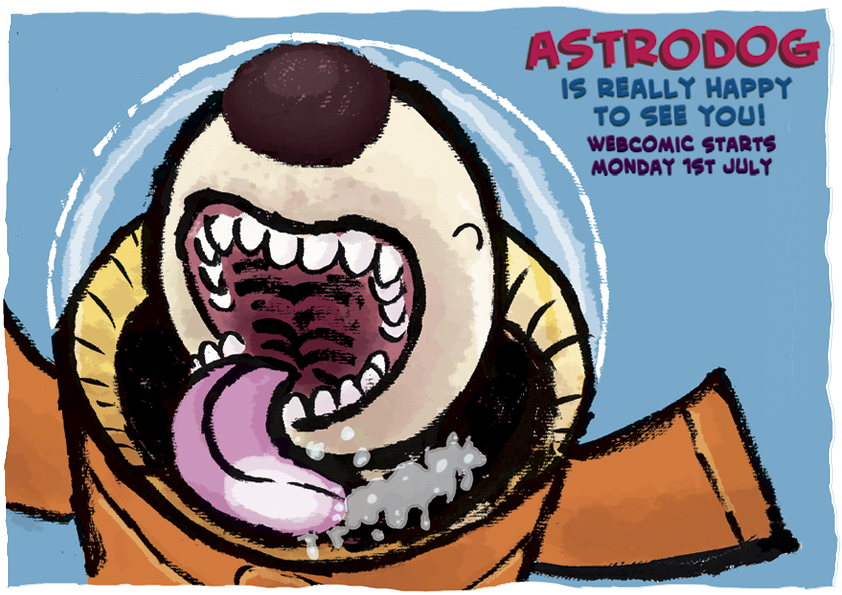
The last page of Paul Harrison-Davies webcomic Astrodog is up today, making this a perfect chance for you to jump in from the start.
Sarah McIntyre’s taking over the UK right now. Look! She’s been on the radio with Katie Melua, and everything!
Top Shelf are running their annual $3 sale, with a number of notable comics available at a deeply reduced price. Go take a look round, see if there’s anything you fancy!
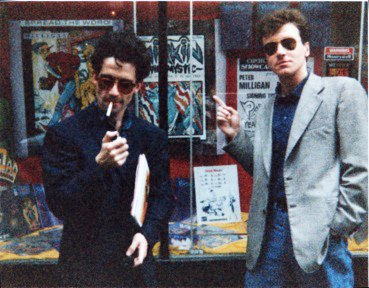
Mark Kardwell interviews Milligan and McCarthy about… The Best of Milligan and McCarthy!
The Outhousers suggest 5.2 reasons why DC shouldn’t fire Dan DiDio.
On the other hand, retailer OK Comics pen an open letter to DC Comics regarding their Villains Month initiative, or rather DC’s messing up of said initiative.

Jason Sacks has a brilliant interview with Elaine Will, about a graphic novel I’d not heard of before – but which sounds utterly fascinating.
Ant Man, directed by Edgar Wright and written by Wright and Joe Cornish, has been placed for release in 2015.
Not comics, but you can sponsor David Brothers on a charity 5K run he’s doing on behalf of Prevention International. If you sponsor, you are guaranteed not to be cursed for the rest of this Friday 13th. Guaranteed!
Jeremy Whitley’s been on the promotional trail for the return of his series Princeless.

Marvel have released an app for iPhones and iPads and all those other fancy iThings which brings JARVIS onto your screen. Voiced by Paul Bettany, the app allows you to find secrets unlocked in the Iron Man 3 DVD, which is out sometime soon.
Self-promotion is all the rage nowadays, so here’s my pitch for the Perfect Wonder Woman Movie.
If you’ve never read Andy Oliver’s Small Press Column over at Broken Frontier, I’d recommend it!
Brian Cronin takes a look at the universally-agreed worst Avenger of all time Wonder Man, and specifically the awful outfits the character has worn over the years.
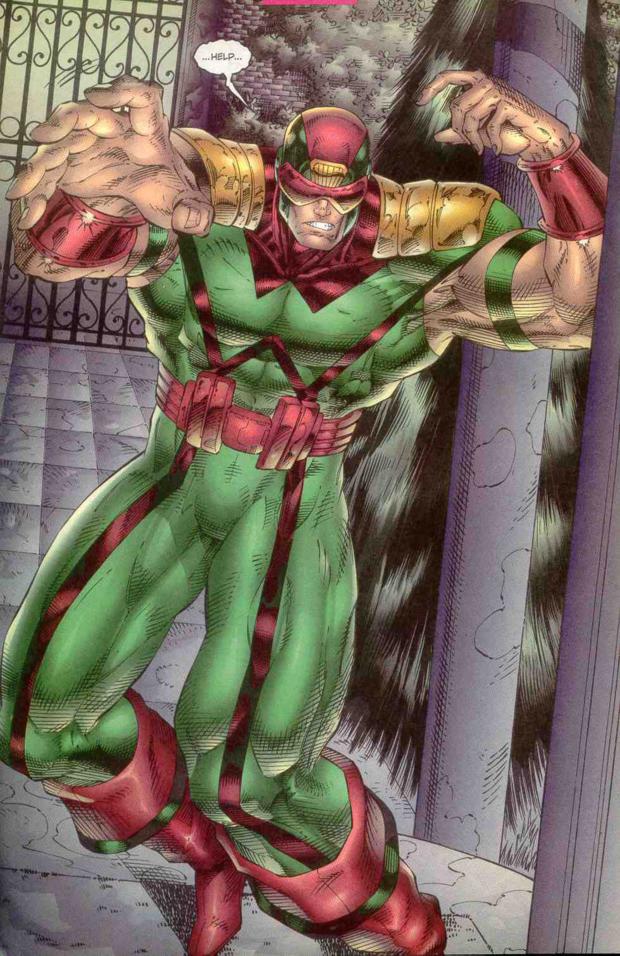

By:
Heidi MacDonald,
on 4/1/2013
Blog:
PW -The Beat
(
Login to Add to MyJacketFlap)
JacketFlap tags:
fine art,
Top Shelf,
espionage,
Frank Miller,
daredevil,
Daniel Clowes,
Top News,
Matt Kindt,
WonderCon 2013,
Eightball,
MIND MGMT,
Superspy,
Travis Langley,
News,
Interviews,
Events,
Comics,
Indies,
Dark Horse,
Add a tag
You’d be forgiven if you think of Matt Kindt as a breakaway success, since the “slow and steady” approach that’s defined his career so far looks like a sprint to the finish line with the explosive success of MIND MGMT from Dark Horse. Educator and author Travis Langley (Batman and Psychology) sat down with Kindt in a marathon 90 minute interview panel with the enigmatic creator on March 30th as part of the Comic Arts Conference at WonderCon. This “Focus” series event revealed just how long a road it has been for Kindt to reach his current level of exposure and fandom with MIND MGMT, a comic series about the dark legacy of a government spy agency staffed by agents with psychic abilities.
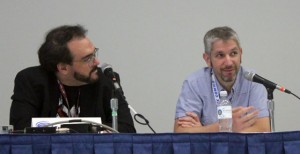 Kindt, who says he’s probably been best know for his graphic novel SUPERSPY prior to MIND MGMT, had an unusual experience with comics at the age of 7 or 8 years old that left a big impression on him and still continues to influence his work. Reading Frank Miller’s DAREDEVIL, he ploughed through an entire issue where Daredevil visits Bullseye in the hospital, now paralyzed (following his murder of Elektra) and repeatedly pulls the trigger on his gun at the murderer. The issue itself consists of Daredevil speaking to the comatose Bullseye with almost no action at all, and as a kid Kindt thought “What kind of crazy superhero stuff is this?”. The heavy, odd dialogue and the “threat” of the unloaded gun, Kindt said, “made me love comics”. After a period in the 90’s when superhero books weren’t “capturing” Kindt’s attention anymore, he had another epiphany after discovering Daniel Clowes’ series EIGHTBALL at a con. He immediately felt, upon reading the issues, “This is the kind of comics I want to do” and an indie sensibility was born. Enter the years of hard work and learning just how to produce comics with his own particular voice.
Kindt, who says he’s probably been best know for his graphic novel SUPERSPY prior to MIND MGMT, had an unusual experience with comics at the age of 7 or 8 years old that left a big impression on him and still continues to influence his work. Reading Frank Miller’s DAREDEVIL, he ploughed through an entire issue where Daredevil visits Bullseye in the hospital, now paralyzed (following his murder of Elektra) and repeatedly pulls the trigger on his gun at the murderer. The issue itself consists of Daredevil speaking to the comatose Bullseye with almost no action at all, and as a kid Kindt thought “What kind of crazy superhero stuff is this?”. The heavy, odd dialogue and the “threat” of the unloaded gun, Kindt said, “made me love comics”. After a period in the 90’s when superhero books weren’t “capturing” Kindt’s attention anymore, he had another epiphany after discovering Daniel Clowes’ series EIGHTBALL at a con. He immediately felt, upon reading the issues, “This is the kind of comics I want to do” and an indie sensibility was born. Enter the years of hard work and learning just how to produce comics with his own particular voice.
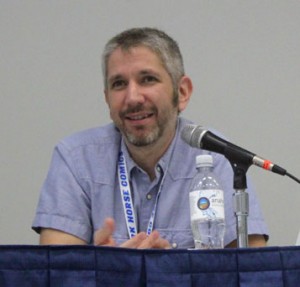 Kindt’s education in fine art and painting, still evident in his comics work, influenced him tremendously in making comics, he told Langley. To “know production” and “have control of every part of the process” of making comics now serves him well, but as an art student at Webster University, he “kept comic books a secret”, since they were not considered an “art form” by his instructors. The most rewarding skill he acquired, Kindt explained, turned out to be print-making. Even though it’s not a “discipline directly related”, its application to comics proved invaluable. “It helped me think about color and composition”, he said, and through print making he acquired one of his key concepts when it comes to making comics, “movement in production”, a phrase his print making instructor used that “still haunts” him. For Kindt, “movement in production” means not being “precious” about a particular stage of production and reminds him not to “hold onto things” but keep his comics output moving. It results in the fairly profound productivity readers see today from Kindt.
Kindt’s education in fine art and painting, still evident in his comics work, influenced him tremendously in making comics, he told Langley. To “know production” and “have control of every part of the process” of making comics now serves him well, but as an art student at Webster University, he “kept comic books a secret”, since they were not considered an “art form” by his instructors. The most rewarding skill he acquired, Kindt explained, turned out to be print-making. Even though it’s not a “discipline directly related”, its application to comics proved invaluable. “It helped me think about color and composition”, he said, and through print making he acquired one of his key concepts when it comes to making comics, “movement in production”, a phrase his print making instructor used that “still haunts” him. For Kindt, “movement in production” means not being “precious” about a particular stage of production and reminds him not to “hold onto things” but keep his comics output moving. It results in the fairly profound productivity readers see today from Kindt.
Another benefit of studying fine arts, Kindt said, was to “learn about everything” and learn to make art before learning to make comics. Learning to make comics from observing comics is fine, he assured the audience, but it is “limiting the scope of how you think about comics”. Kindt, who’s known for his use of watercolor and tirelessly inventive design of marginalia in his work, is a pretty good living example of his point. By bringing in tools and tricks learned in other art forms, he expands awareness for readers and creators about what the comics format can do.
 Kindt told Langley that he started off self-producing mini comics after attending ‘zine shows and first learned there about the common saying that a comics artist has to produce a thousand pages before they really produce one good one. The idea stayed with him as he watched his page count climb over the years. Inspired by autobio comics, he started producing them, meanwhile working his “boring day job”. “Every job was boring to me if I was not doing comics”, he confessed, and added that for him, “Everything has to have a dual purpose”. He worked in cinemas and bookstores to get discounts and continue to explore new artistic influences as part of his “dual purpose” of producing comics.
Kindt told Langley that he started off self-producing mini comics after attending ‘zine shows and first learned there about the common saying that a comics artist has to produce a thousand pages before they really produce one good one. The idea stayed with him as he watched his page count climb over the years. Inspired by autobio comics, he started producing them, meanwhile working his “boring day job”. “Every job was boring to me if I was not doing comics”, he confessed, and added that for him, “Everything has to have a dual purpose”. He worked in cinemas and bookstores to get discounts and continue to explore new artistic influences as part of his “dual purpose” of producing comics.
 After graduating from college, Kindt worked at a “small design firm” and “hated it” despite the fact that it was art related. The “cubicle” environment depressed him and so he would speed through his required work and then “blatantly write comics after the work was done”. He rather ingeniously drafted and planned the comics while at work, so once home, “pages were ready to draw”. Kindt’s answers during this part of the interview were particularly funny as he broke into detailed narratives, but the most memorable vignette concerned using company color photocopiers to produce his comic covers after hours. “I don’t recommend this”, he warned regarding this strategy. Using special, thick paper for the covers, Kindt patiently kept copying despite the fact that the printer would jam every few copies. Finally, one cover “melted to the copier”, imprinting the drum of the copier with the cover image, including his name in clear script. After panicking, then realize there was simply nothing he could do about it, he knew he was “screwed” and left it. He returned to work without saying anything about it, watched the copier being repaired, and waited for the shoe to drop. It never did. His employers, for whatever reason, decided to turn a blind eye.
After graduating from college, Kindt worked at a “small design firm” and “hated it” despite the fact that it was art related. The “cubicle” environment depressed him and so he would speed through his required work and then “blatantly write comics after the work was done”. He rather ingeniously drafted and planned the comics while at work, so once home, “pages were ready to draw”. Kindt’s answers during this part of the interview were particularly funny as he broke into detailed narratives, but the most memorable vignette concerned using company color photocopiers to produce his comic covers after hours. “I don’t recommend this”, he warned regarding this strategy. Using special, thick paper for the covers, Kindt patiently kept copying despite the fact that the printer would jam every few copies. Finally, one cover “melted to the copier”, imprinting the drum of the copier with the cover image, including his name in clear script. After panicking, then realize there was simply nothing he could do about it, he knew he was “screwed” and left it. He returned to work without saying anything about it, watched the copier being repaired, and waited for the shoe to drop. It never did. His employers, for whatever reason, decided to turn a blind eye.
The job provided “motivation” for Kindt due to his profound desire to get away from an office job. He knew at the time, he said, “I’ll never be happy”. He was aware that he needed to “either fail or succeed at the thing I wanted to do most”. “Mocking” copies up at Kinkos at twenty dollars a piece, he printed 20 books and physically took the books to Dark Horse, Top Shelf, and Fantagraphics booths at a show in Chicago. By this time, Kindt had moved beyond autobio comics because he was getting a sense of “horrible feedback” from spending all day at a job he hated and then writing about it again in his comics. From making a list of things he wanted to draw, he concocted stories to allow him to do it. The list, he said (to laughter from the audience) included pirates, elements of old radio shows, and circus freaks. After handing over the hard-won comics to publishers, Kindt was more than amazed to receive a phone call at home. For Kindt, he still remembers the call as his “greatest moment”. Top Shelf wanted the book, “just as it is”. Ironically, the only change they wanted to make was to the melted cover.
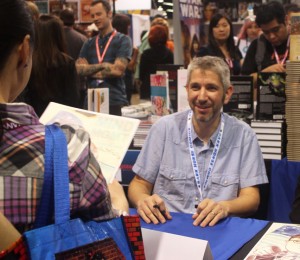 Kindt went on to learn a host of lessons in an uphill struggle to make a living in comics, from realizing that collaboration was just not his thing, to challenging himself (never again, he said) to create an entire graphic novel without a single narrative box, resulting in a 300 page tome, to the realization that with his book SUPERSPY, he had finally reached his 1000th page. Just on time, SUPERSPY took off in ways his previous critically acclaimed works had never managed to achieve.
Kindt went on to learn a host of lessons in an uphill struggle to make a living in comics, from realizing that collaboration was just not his thing, to challenging himself (never again, he said) to create an entire graphic novel without a single narrative box, resulting in a 300 page tome, to the realization that with his book SUPERSPY, he had finally reached his 1000th page. Just on time, SUPERSPY took off in ways his previous critically acclaimed works had never managed to achieve.
Langley then led Kindt into the spy-obsessing portion of the interview, one which provoked a great deal of enthusiasm from the audience. Kindt, surprisingly, said that his espionage-based current work MIND MGMT, is not “really about spies”. He confessed that spy literature and film formed an early influence on his life from a family-bonding trip to a drive-in theatre to see MOONRAKER onward. The travel-writing aspect of spy novels were what Kindt found particularly appealing, churning through all the works of Ian Fleming as a teen. When he reads spy books or watches films now, however, he has a particular strategy in mind. He’s deciding what he’s “not going to put in books” since they’ve already been done by a process of “elimination”.
Kindt’s books now, and increasingly, show his obsession with “gadgetry” to the point that even close personal friends in comics (he mentioned Cullen Bunn and Jeff Lemire as examples) tease him about it, but it’s all part of the “physicality” and “interactive” aspects of printed comic books that appeals to Kindt. MIND MGMT is Kindt’s first fully serialized work where he is functioning as both writer and artist, and he’s taken advantage of that fact to emphasize the capabilities unique to print books, loading the inner covers of the comic, for instance, with extras for fans of spy lore. MIND MGMT contains features like a “field guide” format to its borders, Kindt explained, as if the comic is being presented within a field guide for secret government agents. Kindt also revealed that he’s particularly passionate about the role of covers in printed comics as the “very first page of the story” that has to function and work as simply a cover but also “work in a narrative way”.
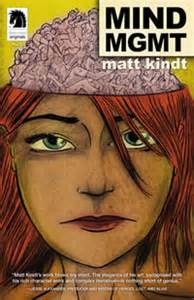 Though the question and answer period was generous and wide-ranging, covering his artistic processes, research for his books, and upcoming plans for MIND MGMT, Kindt’s passion for printed comics became a particularly hot topic. Working on a monthly book that is available in digital formats but contains incentives for print collection helps “get people back into shops every week”, Kindt explained, and may lead to readers discovering new books they like along the way rather than simply waiting for trades. He’s not averse to digital formats, he assured the audience, and reads many comics in digital format, but as a designer he’s concerned that “digital should be designed to be digital” and is not a fan of simple relocation of formats without attention to detail.
Though the question and answer period was generous and wide-ranging, covering his artistic processes, research for his books, and upcoming plans for MIND MGMT, Kindt’s passion for printed comics became a particularly hot topic. Working on a monthly book that is available in digital formats but contains incentives for print collection helps “get people back into shops every week”, Kindt explained, and may lead to readers discovering new books they like along the way rather than simply waiting for trades. He’s not averse to digital formats, he assured the audience, and reads many comics in digital format, but as a designer he’s concerned that “digital should be designed to be digital” and is not a fan of simple relocation of formats without attention to detail.
I asked Kindt, as the final question of the panel, what psychic powers he would like to have if he could somehow acquire them. His list was as down-to-earth as the hour and a half chat he shared with WonderCon goers: remember peoples’ names and be less oblivious. “I’d make the worst spy”, he confessed, “I can’t remember anything”. All a ploy to throw fans off the scent? Hearing a portion of the full story behind Kindt’s seemingly meteoric rise makes something clear once again about working in comics: it entails work, work, work, and more work, but it also demands commitment and passion. It’s not an easy combination to emulate, but for Kindt it’s been the only way to be truly happy.
Photo Credits: All photos in this article were taken by semi-professional photographer and pop culture scholar Michele Brittany. She’s an avid photographer of pop culture events. You can learn more about her photography and pop culture scholarship here.
Hannah Means-Shannon writes and blogs about comics for TRIP CITY and Sequart.org and is currently working on books about Neil Gaiman and Alan Moore for Sequart. She is @hannahmenzies on Twitter and hannahmenziesblog on WordPress.

By:
Heidi MacDonald,
on 3/31/2013
Blog:
PW -The Beat
(
Login to Add to MyJacketFlap)
JacketFlap tags:
Valiant,
Top Shelf,
indie publishing,
Archaia,
Indie Comics,
comixology,
Top News,
Chip Mosher,
Marketing Graphic Novels,
Boom!,
WonderCon 2013,
Dirk Wood,
Hunter Gorinson,
Jeremy Atkins,
Mel Caylo,
Events,
Comics,
Retailing & Marketing,
advice,
PR,
Dark Horse,
IDW,
transmedia,
social media,
Add a tag
ComiXology’s Chip Mosher of Marketing and PR moderated a panel with Jeremy Atkins of Dark Horse, Dirk Wood of IDW, Mel Caylo of Archaia, and addition Hunter Gorinson of Valiant Comics with the goal of sharing tips and pro experience with indie creators and future marketers on Friday, March 29th at WonderCon. The result was quite an entertaining panel featuring their professional blunders and secret discoveries about he ins and outs of comics promotion.
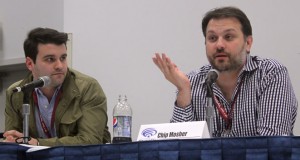 Mosher started out by asking for the embarrassing stories each had accrued in their work experience, “professional blunders” that contained teachable moments. Atkins admitted to the cringeworthy common mishap of hitting “reply all” on an email and copying a person specifically to be excluded from a conversation, with plenty of sympathetic groans from the audience. Mosher’s own tale of woe was equally relatable, reading an e-mail from Emerald City Con and then forgetting to reply afterward, thereby losing booth space for BOOM that year. Wood was more circumspect about his failures, noting that “25% of marketing is what I would call blunders” that can lead either to success or to a “thud”, and that he finds it impossible to tell which will happen in some circumstances. Persistence, he advised, is the key to forge ahead despite an unpredictable market.
Mosher started out by asking for the embarrassing stories each had accrued in their work experience, “professional blunders” that contained teachable moments. Atkins admitted to the cringeworthy common mishap of hitting “reply all” on an email and copying a person specifically to be excluded from a conversation, with plenty of sympathetic groans from the audience. Mosher’s own tale of woe was equally relatable, reading an e-mail from Emerald City Con and then forgetting to reply afterward, thereby losing booth space for BOOM that year. Wood was more circumspect about his failures, noting that “25% of marketing is what I would call blunders” that can lead either to success or to a “thud”, and that he finds it impossible to tell which will happen in some circumstances. Persistence, he advised, is the key to forge ahead despite an unpredictable market.
Caylo dredged up his own worst moments with a story of “drunk tweeting” from the wrong account, declaring his love for someone, a tweet that remained up on a company account overnight whereas Gorinson stuck to the ever-present bugaboo of typos in press releases regardless of how many times the releases are checked before sending them out. Wood’s observation that some blunders can have positive results prompted the panel to consider whether they had similar lucky moments. Wood, particularly, “stumbled into successes” by having random, unlikely ideas for promotion like sending Godzilla costumed promo agents to “smash” stores, something that met with great success. The panel quickly turned interactive, fielding questions from the floor, and the first question, probably also the first on everyone’s mind, was how to run PR and marketing strategies on a shoe-string budget.
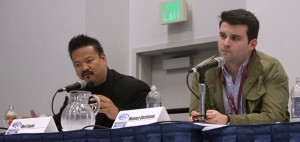 Mosher wittily commented, “This guy thinks that we have budgets” to his fellow panellists before Caylo took up the question with what became perhaps the strongest message of the panel event: “It’s all about relationships”. He suggested that those seeking press for comics go to shows, have e-mail conversations that are “not always pitching”, so that it’s easier when you do want to ask a favor to bring it up. He also added that “offer giveaways” on sites that increase “cross-promotion” are a very smart move. Atkins, who was particularly earnest and animated throughout the panel suggested that Twitter is a major player in promotion for building and continuing to cultivate professional relationships, including the retail industry in your list of contacts. Wood spoke to the indie creator’s situation trying to get books distributed. “Nothing speaks louder than a consignment situation”, he said, and pointed out that Top Shelf started through delivering consignment issues to comic shops, “giving books” to shops and allowing them to sell them rather than seeking solicitation. This involves “relentless beating of the pavement” since there is “no replacing grassroots”.
Mosher wittily commented, “This guy thinks that we have budgets” to his fellow panellists before Caylo took up the question with what became perhaps the strongest message of the panel event: “It’s all about relationships”. He suggested that those seeking press for comics go to shows, have e-mail conversations that are “not always pitching”, so that it’s easier when you do want to ask a favor to bring it up. He also added that “offer giveaways” on sites that increase “cross-promotion” are a very smart move. Atkins, who was particularly earnest and animated throughout the panel suggested that Twitter is a major player in promotion for building and continuing to cultivate professional relationships, including the retail industry in your list of contacts. Wood spoke to the indie creator’s situation trying to get books distributed. “Nothing speaks louder than a consignment situation”, he said, and pointed out that Top Shelf started through delivering consignment issues to comic shops, “giving books” to shops and allowing them to sell them rather than seeking solicitation. This involves “relentless beating of the pavement” since there is “no replacing grassroots”.
Atkins used this idea to springboard into a gambling metaphor: “In gambling and in life, you only win when you can afford to lose”. You shouldn’t expect return immediately, he warned, but trying different approaches and continuing to do so as long as possible is key. Mosher had strong feelings on the subject, reflecting on the example of a student protester who brough the New York Stock Exchange to a standstill by busking for dollar bills all day, then throwing a hundred bills onto the exchange floor. It was the perfect example, for Mosher, of “getting attention at low cost” and using the least resources to garner the “biggest impact”.
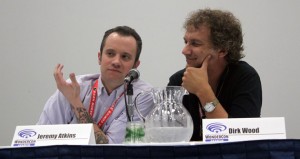 Gorinson focused on knowing your material and audience to get attention. Knowing the pitch well, and the many angles from which it might be interpreted, breaking out of narrow genre definitions, for instance, may win the day. He recommended top comics news sites as vehicles for spreading the word, as well as working “with anyone and everyone”, including small blog sites. Mosher’s experience at BOOM confirmed this premise. Starting out publishing only 4 to 7 books a month, he scoured blogs, put people in press lists, and sent them PDF review copies in an era before most comics companies were using PDFs in this way, and thereby grew a press list of 400 contacts.
Gorinson focused on knowing your material and audience to get attention. Knowing the pitch well, and the many angles from which it might be interpreted, breaking out of narrow genre definitions, for instance, may win the day. He recommended top comics news sites as vehicles for spreading the word, as well as working “with anyone and everyone”, including small blog sites. Mosher’s experience at BOOM confirmed this premise. Starting out publishing only 4 to 7 books a month, he scoured blogs, put people in press lists, and sent them PDF review copies in an era before most comics companies were using PDFs in this way, and thereby grew a press list of 400 contacts.
Wood added that looking at comparable publishers and types of titles to the comic you are trying to circulate is a good starting point, looking to see how and where they are doing their marketing and focus your attack in that way. A common pitfall the panellists all agreed on is when creators send a pitch to a company for a comic series that’s a 12 issue proposal or longer. Companies aren’t willing to take the risk, they advised, and a 3-4 issue format is much more appealing at the outset of a project.
A follow up question from the audience regarded strategies to capitalize on the rash of superhero movies and growing movie fans who might never have read a comic. Several panellists felt that there’s no one single approach to bring film fans into comics, but a more surefire method is to “start them young”, reaching young readers with comics visual literacy. Mosher agreed, stating that there are more kids comics today than in the past decade, and comics continue to have unique qualities of storytelling that continue to appeal as a child grows up reading them. Gorinson added that Free Comic Book Day is an excellent opportunity to “get into as many shops as possible” and reach new, young readers. Mosher and Caylo both returned to the subject of cross promotion between films, tv, and comics, like the inclusion of ashcan comics in dvd box sets to show fans what comics alternatives are available for their favorite products.
 A direct marketing question from the floor focused on the similarities or differences between selling comics and other products, like household items. Atkins felt there was very little difference at all, except that it’s more possible in comics to “know who that person is” you are targeting since “They are me, or some version of me”, as a comics fan. He continued with some other salient advice, such as “You have to believe in what you’re selling” and believe that you are “one of the best advocates for it”. Gorinson felt that marketing comics is different from marketing other consumer products because he often feels an “obligation” to live up to the quality of the work he’s promoting in his own efforts.
A direct marketing question from the floor focused on the similarities or differences between selling comics and other products, like household items. Atkins felt there was very little difference at all, except that it’s more possible in comics to “know who that person is” you are targeting since “They are me, or some version of me”, as a comics fan. He continued with some other salient advice, such as “You have to believe in what you’re selling” and believe that you are “one of the best advocates for it”. Gorinson felt that marketing comics is different from marketing other consumer products because he often feels an “obligation” to live up to the quality of the work he’s promoting in his own efforts.
Gorinson and Atkins also suggested doing some research into major news sites to find out who on staff might be a comics fan, “finding” that contact, or locating dedicated geek blogging attached to news sites. Atkins and Mosher commented that using social media makes reaching out to news writers more and more direct. Mosher admitted that not everyone may have the desire or “skill set” to promote their comics properly despite attempts, and in that case, he advised, you should find a friend who thrives on that kind of work and collaborate on promotion.
The final big topic addressed by the panel, and one which inspired some lively reactions from the speakers, was the use of transmedia and multiple media formats to draw attention to comics. Caylo said that it’s all about “synergy” between comics, films, and related video games, based on his work at Archaia. Atkins clarified, however, that adding transmedia content to promote comics, such as an app or video game should still be “meaningful to the overall story.
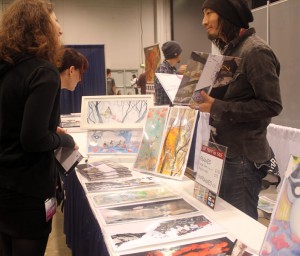 I posed a last question to the panel before it came to a close, wondering what the biggest pros and cons are to using social media as a promotional tool. Gorinson replied that you have to be “clever” in different ways to use social media properly for this purpose, while Mosher commented simply, but with some emotion, “Trolls!” as his biggest con. Caylo was the most personally engaged by the question and gave the following run down: social media’s benefits are “accessibility” and the quickness and “ease” of getting the word out about your product, especially when doing it for free. The “dangers”, however, are that “You are open to trolls and people who want to bait you”. “Ignore them”, he recommended, since once they “engage” you, they’ve “got you”. Block them if necessary, and learn to take “the bad with the good” when it comes to social media.
I posed a last question to the panel before it came to a close, wondering what the biggest pros and cons are to using social media as a promotional tool. Gorinson replied that you have to be “clever” in different ways to use social media properly for this purpose, while Mosher commented simply, but with some emotion, “Trolls!” as his biggest con. Caylo was the most personally engaged by the question and gave the following run down: social media’s benefits are “accessibility” and the quickness and “ease” of getting the word out about your product, especially when doing it for free. The “dangers”, however, are that “You are open to trolls and people who want to bait you”. “Ignore them”, he recommended, since once they “engage” you, they’ve “got you”. Block them if necessary, and learn to take “the bad with the good” when it comes to social media.
The panel was surprisingly lively, with all the panellists more than willing to share from their personal struggles to find the golden balance when it comes to marketing with limited budgets, and each expressed an obvious commitment to the survival and growth of worthy comics through good strategies and trying innovative methods to see what works for each book and each particular situation. Building personal relationships, watching out for the wrong kind of blunders, and learning from them when they occur, were paramount for these indie publishing marketers.
Photo Credits: All photos in this article were taken by semi-professional photographer and pop culture scholar Michele Brittany. She’s an avid photographer of pop culture events. You can learn more about her photography and pop culture scholarship here.
Hannah Means-Shannon writes and blogs about comics for TRIP CITY and Sequart.org and is currently working on books about Neil Gaiman and Alan Moore for Sequart. She is @hannahmenzies on Twitter and hannahmenziesblog on WordPress.
 In May Top Shelf in the US and Knockabout in the UK will be co-publishing The From Hell Companion. The Top Shelf website describes it as
In May Top Shelf in the US and Knockabout in the UK will be co-publishing The From Hell Companion. The Top Shelf website describes it as
An astonishing selection of Alan Moore‘s original scripts and sketches for the landmark graphic novel, with copious annotations, commentary, and illustrations by Eddie Campbell.
Here for the first time are a set of pages, including some of Moore’s greatest writing, which have never been seen by anyone except his collaborator. Joining them are Campbell’s first-hand accounts of the project’s decade-long development, complete with photos, anecdotes, disagreements, and wry confessions. Arranged in narrative order, these perspectives form a fascinating mosaic, an opportunity to read FROM HELL with fresh eyes, and a tour inside the minds of two giants of their field.
…but then they would, wouldn’t they?
To get the real story, I wrote to Eddie Campbell, who did all the actual heavy lifting on this book, to see what he had to say about it. Along the way we discussed Bryan Talbot, Steve Moore’s middle name, and whether or not Hayley Campbell turned out normal…
Pádraig Ó Méalóid: Tell me about The From Hell Companion.
 Eddie Campbell: The From Hell Companion is a selection of extra material and background stuff all relating to From Hell the book. It’s arranged in such a way that it becomes a retelling of the story from a bunch of new angles, including the personal and publishing histories. I mean to say that I’ve used excerpts from Alan’s scripts and thumbnail sketches, but I haven’t just dumped them in there in separate sections. I’ve woven it all together in narrative sequence, with technical commentaries, short essays and speculations, as well as anecdotes, photos and previously unseen artwork of mine. Plenty of digressions. The rarest thing I have is a 15,000 word synopsis that Alan wrote describing the second half of the book for the benefit of the movie production company. They bought the rights when we were only up to chapter 8, you see. The attraction of this synopsis is that it has a few sequences that play out differently from the finished book that everybody is familiar with. Again, I’ve worked these in where they belong narratively.
Eddie Campbell: The From Hell Companion is a selection of extra material and background stuff all relating to From Hell the book. It’s arranged in such a way that it becomes a retelling of the story from a bunch of new angles, including the personal and publishing histories. I mean to say that I’ve used excerpts from Alan’s scripts and thumbnail sketches, but I haven’t just dumped them in there in separate sections. I’ve woven it all together in narrative sequence, with technical commentaries, short essays and speculations, as well as anecdotes, photos and previously unseen artwork of mine. Plenty of digressions. The rarest thing I have is a 15,000 word synopsis that Alan wrote describing the second half of the book for the benefit of the movie production company. They bought the rights when we were only up to chapter 8, you see. The attraction of this synopsis is that it has a few sequences that play out differently from the finished book that everybody is familiar with. Again, I’ve worked these in where they belong narratively.
PÓM: What prompted you to do this now?
 EC: Alan and I had planned to do something for quite some time, usually intending for it to coincide with the fifteenth or twentieth anniversary of starting or finishing From Hell. But Alan was never quite free enough from other absorbing subjects and we kept missing the boat with it. I had done a public talk in 2011 for which, in need of a subject, I had pulled out an old From Hell script anecdote. This went over so well that I thought I could put the whole book together myself, using all the materials available, both Alan’s and mine, but without having to wait for anyone. Once motivated, it came together very quickly as though it had always been waiting to happen, which of course it had.
EC: Alan and I had planned to do something for quite some time, usually intending for it to coincide with the fifteenth or twentieth anniversary of starting or finishing From Hell. But Alan was never quite free enough from other absorbing subjects and we kept missing the boat with it. I had done a public talk in 2011 for which, in need of a subject, I had pulled out an old From Hell script anecdote. This went over so well that I thought I could put the whole book together myself, using all the materials available, both Alan’s and mine, but without having to wait for anyone. Once motivated, it came together very quickly as though it had always been waiting to happen, which of course it had.
PÓM: The thing with a book like The From Hell Companion, is it gives us a look at the process – I mean, people who say things like ‘I’ve read everything that Alan Moore has written’ couldn’t be more wrong, because what he wrote was the script, which they rarely get to see. What they’ve actually read is his script as processed through an artist – you in this case – so the opportunity to get a look at some of the process of the conversion of Alan’s raw script into the finished product is always an interesting and illuminating one.
EC: Yes, this is a book about processes. I bring the reader in on a couple of problems that have to be solved and show possible solutions as we go along. From Hell is like a huge big machine with a nice clean orderly front panel. And when you unscrew it and take that off, beneath it you see a complex of wires and cogs and moving parts caked with lubricant. That’s the Companion. After only seeing the front panel for years, this new version of the machine makes the whole thing interesting in ways you never thought of before.
 PÓM
PÓM: I’ve been having a quick look through the pdf you sent me, and there are a few things that I’m particularly taken with. There’s the research photos of London, with
Alan and
Steve (no relation)
Moore, for a start. And there’s a few places where you compare and contrast your original illustrations with scenes from the film. There’s a sort of common theme here, of things going from one medium to another.
EC: (No relation) has become Steve’s official name, have you noticed that? He should have it made permanent by deed poll. Yes, from one medium to another. I also do a lot of putting Alan’s thumbnail sketches next to the finished page, both shown at approximately the same size. Alan made those all through the years, in his notebooks, not just for From Hell, for all his works, but the artist never got to see them. So there were some real revelations there for me when I got hold of them. Particularly in regard to how close they sometimes are to the finished page, and then there are some that I changed for one reason or other, and I tell the reader what the reasoning was for the changes. I show a lot of the thinking that went on behind the book, and draw the reader into the arguments between one thing and another. From Hell would be complicated enough just at the forensic level, but there are all these additional aesthetic complications. I make extra narrative layers out of it, new sub-plots. Like, for instance, how to you draw a character and at the same time say maybe she wasn’t there. The graphics of theory and guesswork is one of the running themes.
 PÓM: I’m also fascinated by the piece with the illustrations by your daughter Hayley when she was seven years old, showing herself being killed in all sorts of ways. I mean, I met her recently, and she seems quite normal…
PÓM: I’m also fascinated by the piece with the illustrations by your daughter Hayley when she was seven years old, showing herself being killed in all sorts of ways. I mean, I met her recently, and she seems quite normal…
EC: That was a late addition. I thought I needed to shine a light of joy into the grimness of it all, so we ask, how did all of this look from a child’s perspective. Around about chapter six I became aware that my daughter was sitting in the room drawing her own version of the HORRORS. I don’t mean she was drawing From Hell. Her book was much more original than that. She was drawing a compendium of all the possible ways of dying. She drew over thirty of these before she ran out of steam. She was only seven after all, and had little experience of dying. But yeah, she seems quite normal. She must have got it all out of her system.
PÓM: I was talking to her about it just now, and she says she’d like to get it published. I know she’s working on a book about Neil Gaiman, at the moment [to be published by Ilex Press in March 2014]. Have you seen any of that?
 EC: I think that first book of hers, The Ripper File as she titled it, was the place where she found herself as an author. We all have that first one, the first time we genuinely expressed something about the actual contents of our head instead of doing the thing we had been ordered or expected to do, like our homework. And Hayley has now arrived at the stage where she has written an official book, one for a publisher I mean, as opposed to one for the sheer urgent joy of making it, and I think she’s at the stage where she has to argue with editors who want to turn it back into that homework she avoided. The most difficult part of writing a book is that phase where you have to argue with the editor who wants a somewhat different book from the one you delivered. I still get that myself, even with The From Hell Companion, believe it or not.
EC: I think that first book of hers, The Ripper File as she titled it, was the place where she found herself as an author. We all have that first one, the first time we genuinely expressed something about the actual contents of our head instead of doing the thing we had been ordered or expected to do, like our homework. And Hayley has now arrived at the stage where she has written an official book, one for a publisher I mean, as opposed to one for the sheer urgent joy of making it, and I think she’s at the stage where she has to argue with editors who want to turn it back into that homework she avoided. The most difficult part of writing a book is that phase where you have to argue with the editor who wants a somewhat different book from the one you delivered. I still get that myself, even with The From Hell Companion, believe it or not.
 PÓM: Are we ever likely to see the full scripts of From Hell published in book form, do you think? I’d love to see that series of them that Steve Bissette‘s SpiderBaby Grafix were doing finished.
PÓM: Are we ever likely to see the full scripts of From Hell published in book form, do you think? I’d love to see that series of them that Steve Bissette‘s SpiderBaby Grafix were doing finished.
EC: Who knows? But we’re missing a couple of chapters. I got around that in the Companion by filling in those spots with other stuff. I think also it would require a very serious scholarly interest to enable a person to read all of it like that. Inevitably a great deal of the script is essentially tending to the business of getting everything in the right place. I’ve selected the more exciting pieces of pure writing, and some of it really is very very good. For anybody interested in Alan’s work, there will be some great things in the book, most of it never seen before. And about the same amount again of my own theoretical stuff too. So there is a great deal here for anybody interested in the theory of what makes comics work. All those ‘literaries’ might learn a thing or two.
PÓM: Did you ever have any theories of your own about Jack the Ripper, about who it might have been, either before or after doing the book?
EC: My theory is that we cannot stand the idea that the universe is random, so we have invented god and conspiracy theories. We would prefer to believe that evil people are in control than that nobody is in control.
 PÓM: You were recently writing – whilst being rude about that lovely Bryan Talbot – about your Basic Rules of Comprehension for comics.
PÓM: You were recently writing – whilst being rude about that lovely Bryan Talbot – about your Basic Rules of Comprehension for comics.
EC: I love making rules, just to see people’s reactions. Artists all want to be rule-breaking punks. So if I say ‘shave after your shower because then your face will have been already softened by the hot water’, they say ‘don’t tell me what to do, I’m going to do it the other way round, I’ll shave before my shower so that the spray washes away all the foam and shavings’. Or if I say ‘don’t get your socks wet or you’ll get feet cramps in your later years’ they’ll say ‘fuck you Dad, I’m going to stand in the puddles and see if you like it, yeah fuck you’. I picked on Bryan because now that he’s got that honorary doctorate he’ll definitely take umbrage at me thinking I know more than he does. ‘Eat shit Campbell!’ he’ll shout.
PÓM: Are these actually collected together anywhere?
EC: No. In fact I threw them out after the first time I wrote them. And then when I needed something to put on my blog I tried to remember them, except I gave the ones I could recall the wrong numbers, which I only know because my rough notes for the original set turned up later. But really, I think comics have become quite unreadable. The amount of effort required to get through one far outweighs the nutritional benefit. They are like celery in this respect. All those young turks should get more orderly in their storytelling. Then they’ll say, maybe them rules do make sense, maybe we should have been wearing the socks inside the shoes after all.
Anyway, there’s a lot of those technical arguments in the Companion, about why it was done one way instead of another. Stuff about the complicated organizational strategies you need to think about in doing long-form comics.
 PÓM: Is there any news on when we should expect to see the two volumes of Bacchus?
PÓM: Is there any news on when we should expect to see the two volumes of Bacchus?
EC: They keep getting delayed. The Spanish edition will be out before the English language one.
PÓM: And there’s that book you published electronically, Dapper John. Are we ever going to see a physical edition of that?
EC: It’s an ebook [PÓM edits to add: Actually an iPad/iPhone App] because Russell Willis wanted to do it and nobody else was asking. I imagine everything will be ebooks eventually. And then print books will make an unexplainable comeback, like we are now seeing with vinyl.
PÓM: Is there anything else I should be asking you about? And forthcoming books I don’t know about, films, TV series, anything at all?
EC: There’s the book I’ve done with Neil Gaiman titled The Truth is a Cave in the Black Mountain. That’s another one that keeps getting delayed. It’s been ready to print for a year now.
PÓM: Thanks for taking the time to do this interview, Eddie.
EC: Thank you, Porridge. have I pronounced that right? You’re doing some fine work around the edges of our medium. Long may you continue!
…so now you know.
Tomorrow is the day human history changes direction and sets sail for the future, as SUPERF***CKERS, the cartoon based on the James Kochalka superhero epic, debuts on the Cartoon Hangover video channel.
Cartoon Hangover already debuted THE BRAVEST WARRIOR, and SUPERF***CKERS will appear every Friday until February.
In case you missed the comic, the SuperFs—and their leader, Jack Crack—are the randiest, raunchiest, rowdiest, revoltingest teen superhero team ever. In the above EXCLUSIVE AND UNCENSORED clip you begin to see why. Here’s the official trailer with requisite puking jokes:
Super F’s will be seen in censored form on YouTube and uncensored on the website.
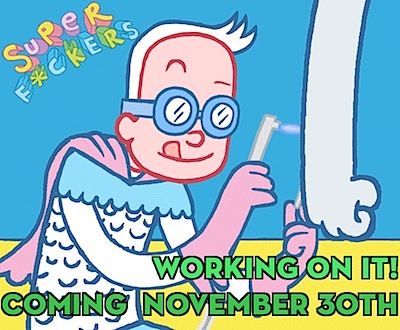

By:
Heidi MacDonald,
on 8/19/2012
Blog:
PW -The Beat
(
Login to Add to MyJacketFlap)
JacketFlap tags:
Halloween,
Comics,
Retailing & Marketing,
Dark Horse,
Archie,
Viz,
IDW,
Fantagraphics,
Ape,
Top Shelf,
NBM,
Boom Studios,
Archaia,
Antarctic,
FCBD,
Add a tag
___________________________________________________________________________
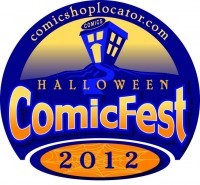
A few months ago, I brainstormed about how Halloween mini-comics being offered by Diamond could be used in a variety of ways to promote comics and have some fun! (Read that again… there are event suggestions and a timeline there, which I’ve paralleled below, but did not exactly duplicate.)
During C2E2, Diamond announced that in addition to the extremely successful Free Comic Book Day, a second event, linked to Halloween, would be promoted.
With the July issue of Previews, Diamond has announced the event, titled “Halloween ComicFest“, designed to help comics shops market themselves as “Halloween Headquarters”.
Sure it’s only July, but do you know where you’re getting your Halloween costume and accessories? How about a gift for the horror fan in your life? Have you decided where the best Halloween events and parties might be?
Why it’s your local comic book shop, of course!
This year, comic shops across the world will band together for Halloween ComicFest, a celebration of your local comic shops and all the comics, tricks and treats they offer. Your local comic shop already does some great Halloween events and is a great place to visit Halloween in-store events, parties, contests, sales and more!
On the next few pages, you’ll find some new offerings from comic book publishers including some new comics that will be available during your store’s Halloween ComicFest celebrations. Make sure you mark your calendars with your local comic shop’s Halloween events!
Below are the actual mini-comics offered this year, in bundles of 20, with the text from the Diamond order form. The “Final Order Cutoff” (FOC) deadline for stores is August 30, 2012. (Westfield’s deadline is August 28.)
Ask your local retailer to order the following for you, using the Diamond codes (JUL12 xxxx). You should offer to pay for them in advance, since the comics shop will most likely consider these unusual items, and be hesitant to place the order.
Of course, if they’re a cool store, they are probably participating in Halloween ComicFest, and will be happy to add your order to their store order. Bundle orders over 25 (of all titles combined) receive an additional discount for the store.
If you do not live near a comics shop, or need to have them shipped somewhere, Westfield Comics (and many other online retailers) will allow you to order them for you. The links below for each title direct to Westfield, which I selected because I’ve used them in the past, their website is easy to navigate, they offer a discount on the price. and they were quick to answer my questions regarding the first three items. (ComicsPlus offers all the titles for sale, as well.)
The

by Alexander Añé
One of the hot topics in the comics industry is the movement into the digital medium, and of course the biggest question in that migration is, “what’s it going to cost?” Sunday afternoon at San Diego Comic-Con, the leading voices in this debate came together to discuss this topic: Mark Waid representing Thrillbent, Scott Kurtz the creator of PvP, IDW Publishing’s ePublishing director Jeff Webber, Chris Ross attending as Top Shelf’s director of digital publications, and moderating the panel is comiXology’s Chip Mosher.Mark Waid was a little late showing up, having just won three Eisner Awards the evening before, and after introducing the panel Chip asked the panelists, “what is the ideal price for digital comics and why?”
The line of responses started with Mark Waid, and he suggested, “99 cents… because 99 cents is the point at which even the most casual readers will drop 99 cents will try something they have not tried before. 99 cents is the price you’d pay on an app from the app store… We’re not competing with other comics and we’re not competing with print comics, we’re competing with other things that cost 99 cents.”
Jeff Webber suggested that, “there’s not one price,” following up by suggesting a staggered price system based on date of release, starting from full cover price and lowering after periods of time with the inclusion of discounts; citing that IDW’s best selling digital items at the, “highest price up… except when we do a 99 cent sale.”
Scott Kurtz focused on the question, “Is this digital market the first or secondary market for this content?” His belief is that depending on the use of the digital market, should influence the price, whereas first market should be 99 cents and secondary should be free; especially in regard to marketing, “it should be zero or very little.”
Chris Ross narrowed the question to specifically what sort of comics should be priced and in which way, “Top Shelf publishes big, huge books, it doesn’t make sense to price those 99 cents.” He explained that Top Shelf’s strategy is to price their digital books to help supplement physical books and in a way that encourages readers to invest in physical copies. Mark Waid followed up with the price point concept by suggesting the question, “My motto at Thrillbent is more, ‘I want to charge 99 cents for this, then how much can I give you?’”
Chip Mosher then posed the question, “Don’t you think the 99 price point discussion is really about having people discover more comics, making them accessible, cheaper?” Chris Ross replied “I think the one thing we keep coming to as far as the 99 cents, is Angry Birds. That’s the thing that said you can get hours and hours of entertainment for only a dollar. So when you purchase a comic or you purchase a graphic novel, if it’s anything that takes you an hour or two, you feel that if you pay $4 for it you just got screwed.”
Scott Kurtz replied by saying, “It’s scary to spend 5 bucks to ‘rent’ a comic,” and continued on how paying a full price becomes an obstacle to draw in new readers and how portals or a













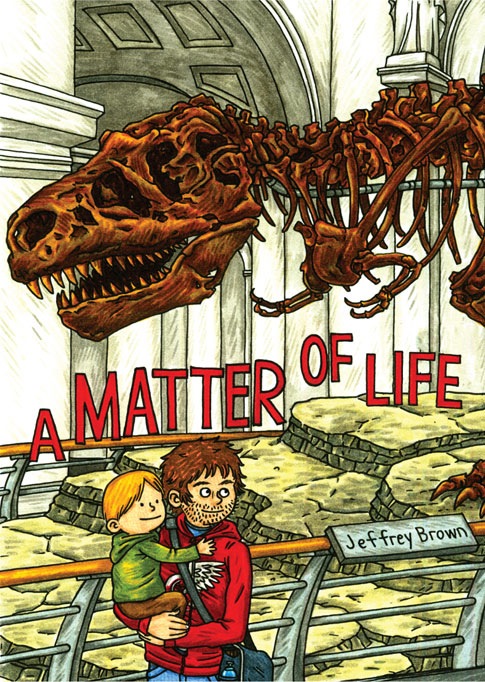
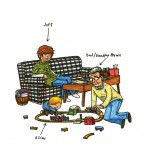

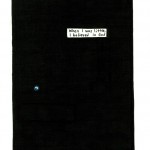
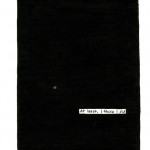
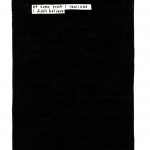

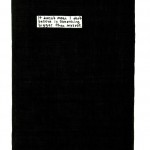

























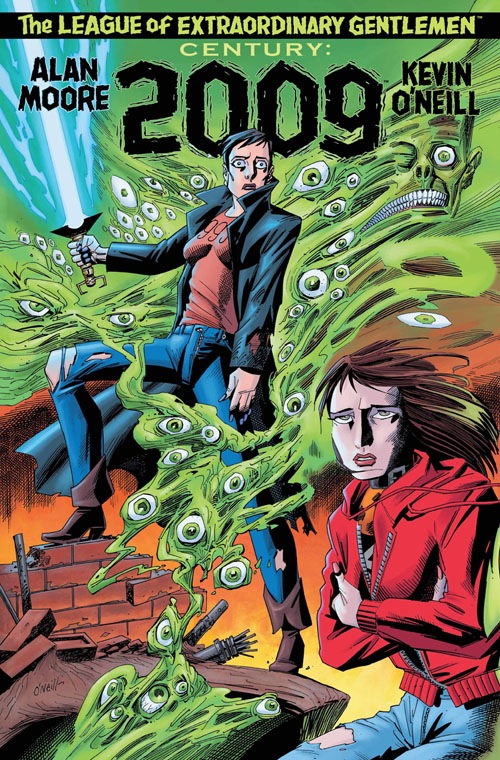

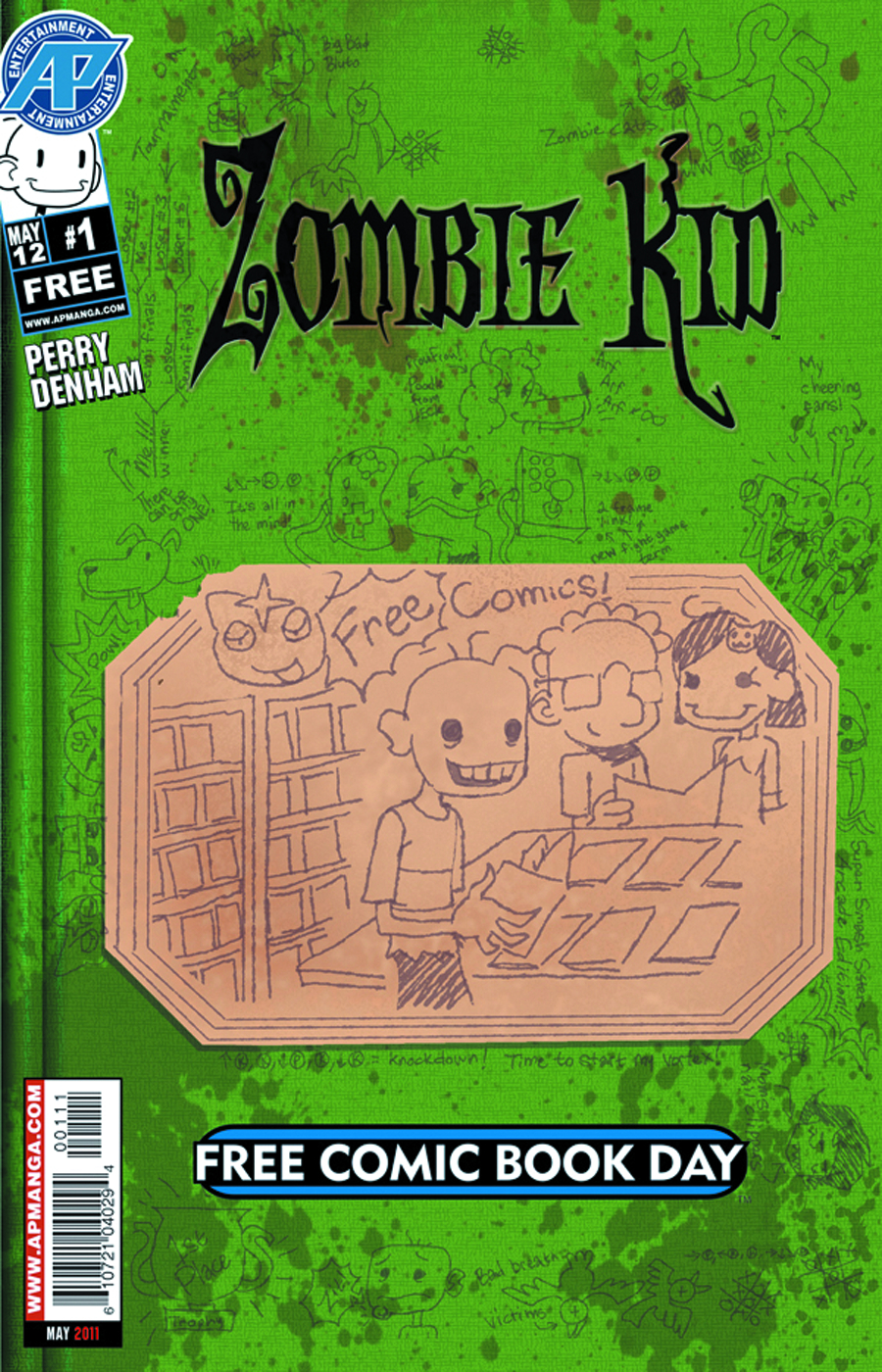

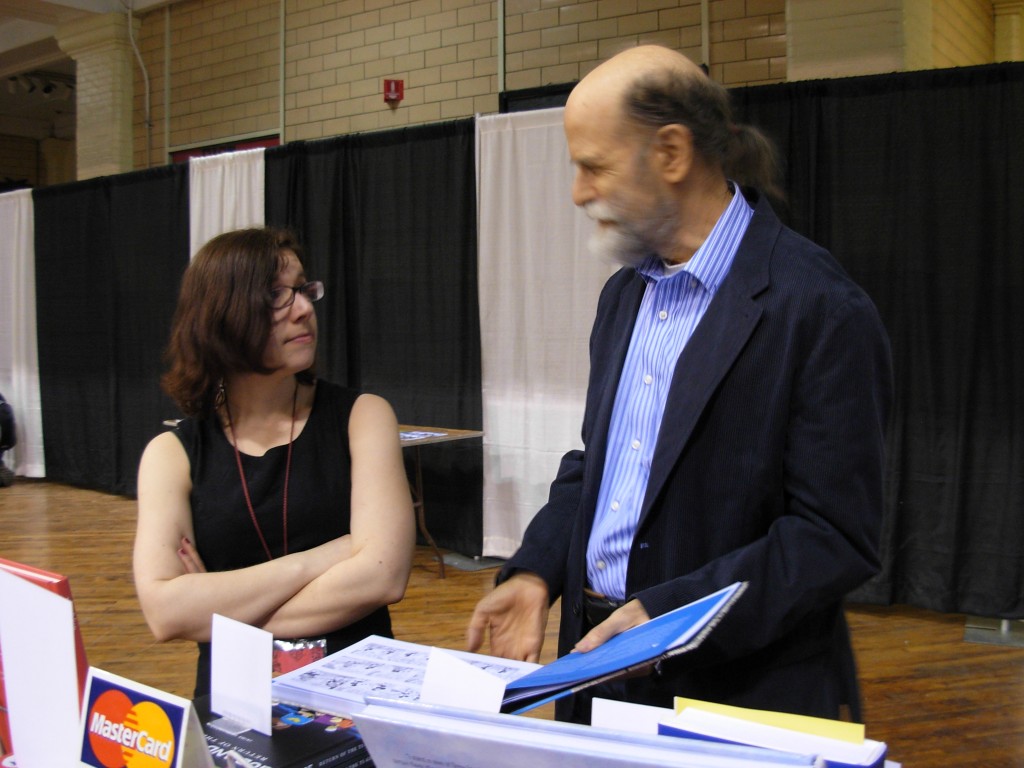

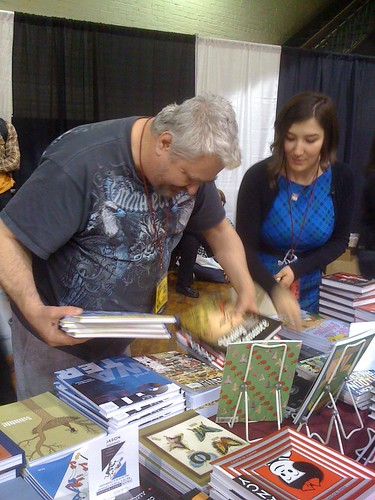
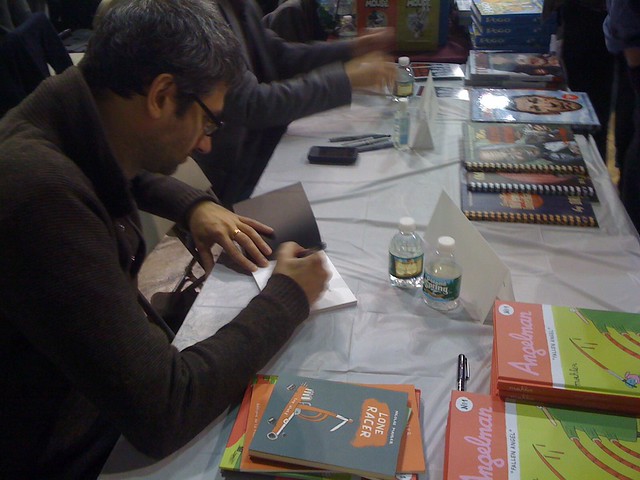
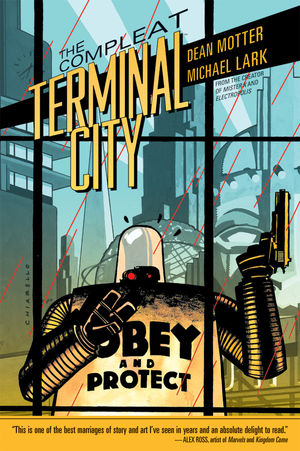
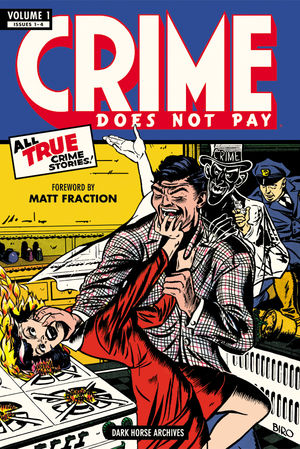



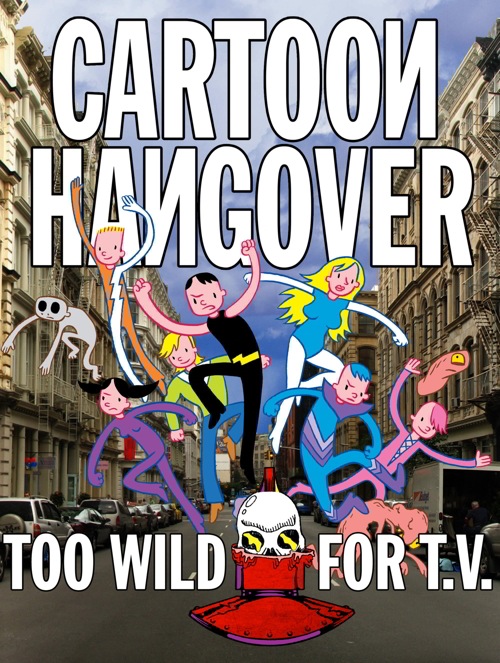
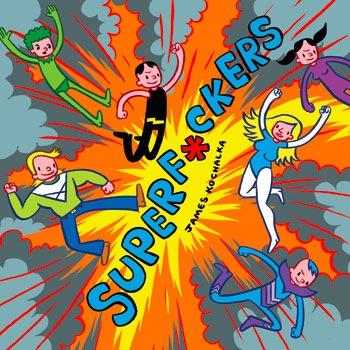











[…] Tweet […]
quite an honor
[…] Heidi McDonald, writing for The Beat, reports on John Lewis, Andrew Aydin, and Nate Powell’s March: Book One being the first graphic […]